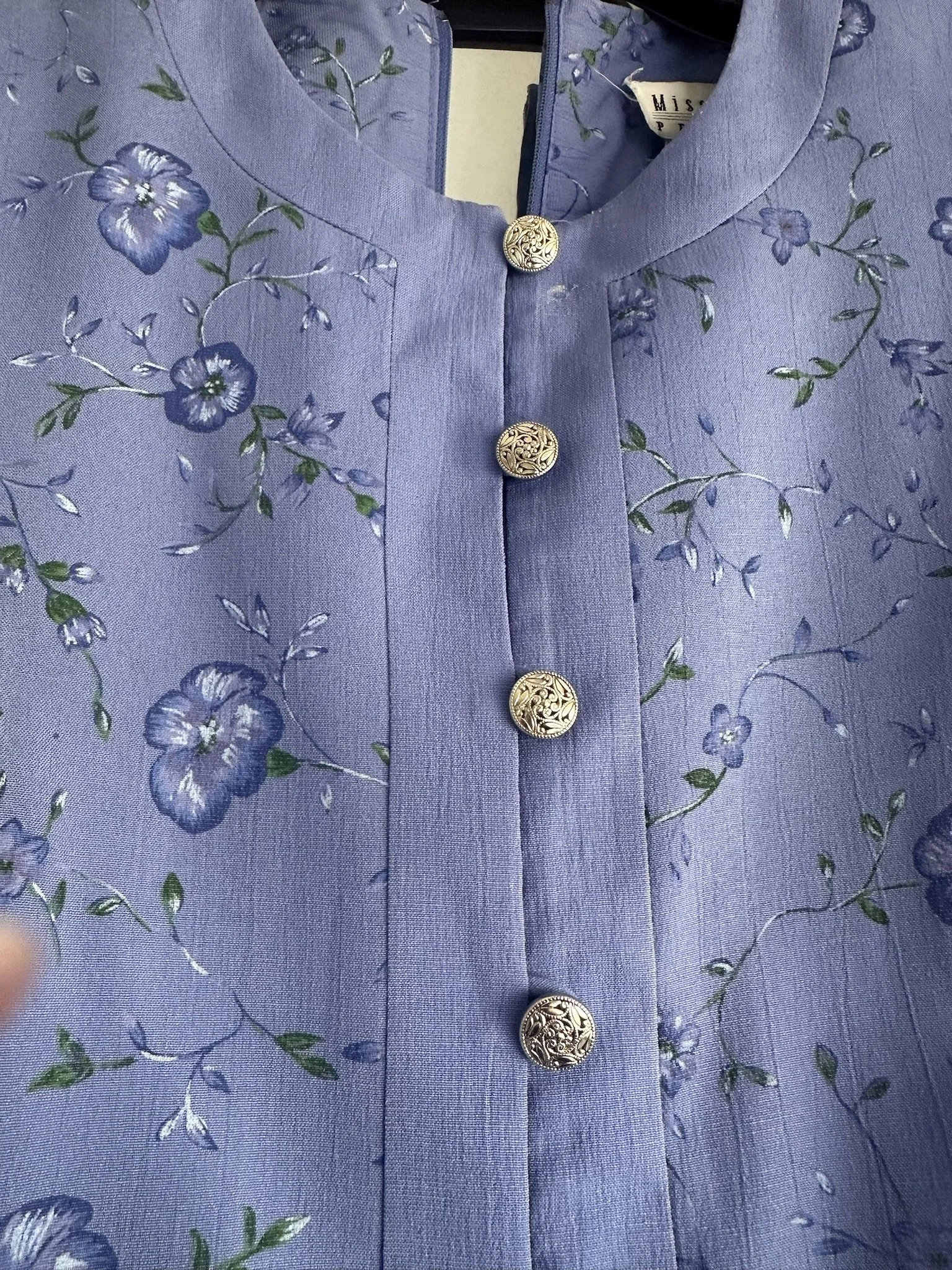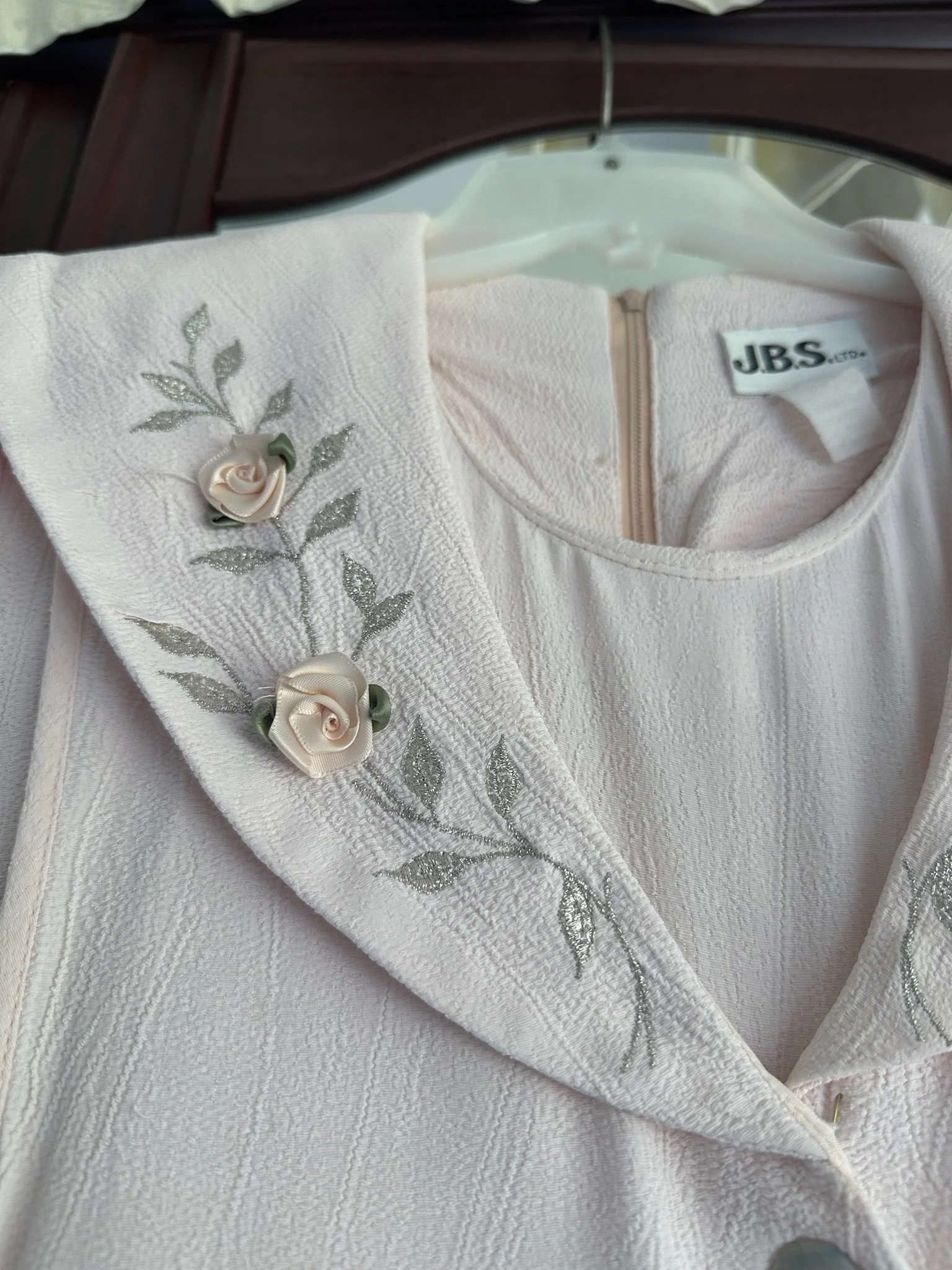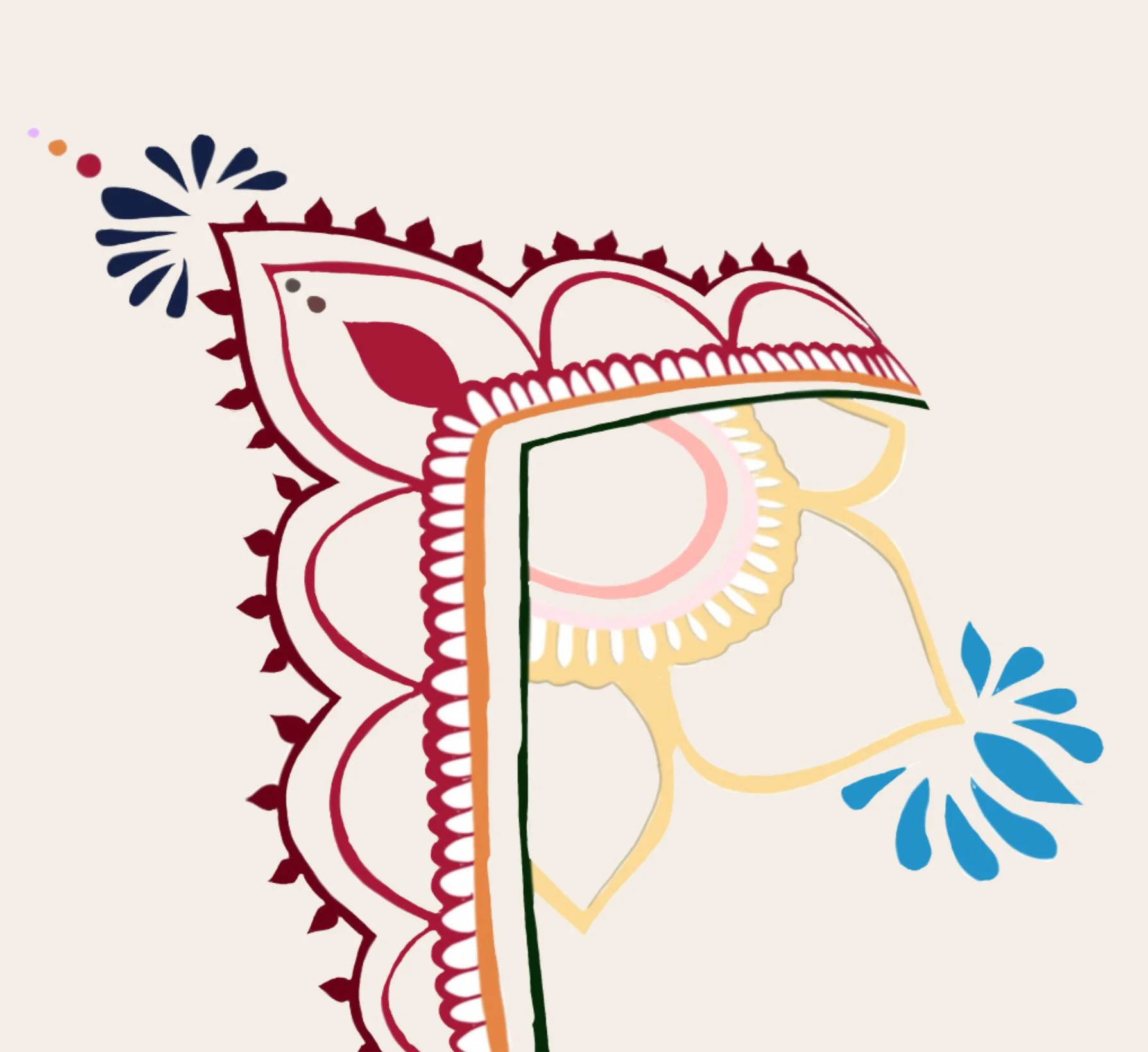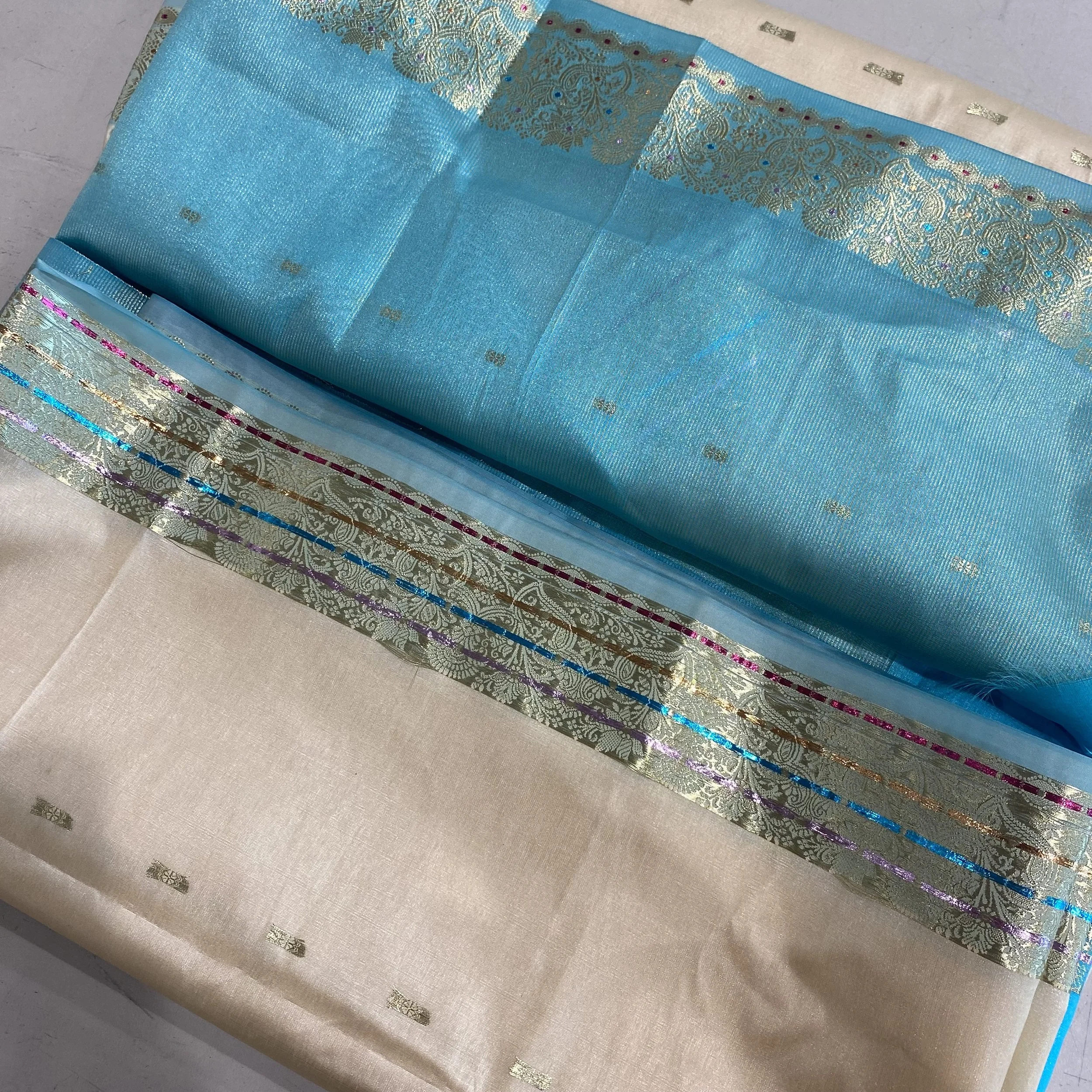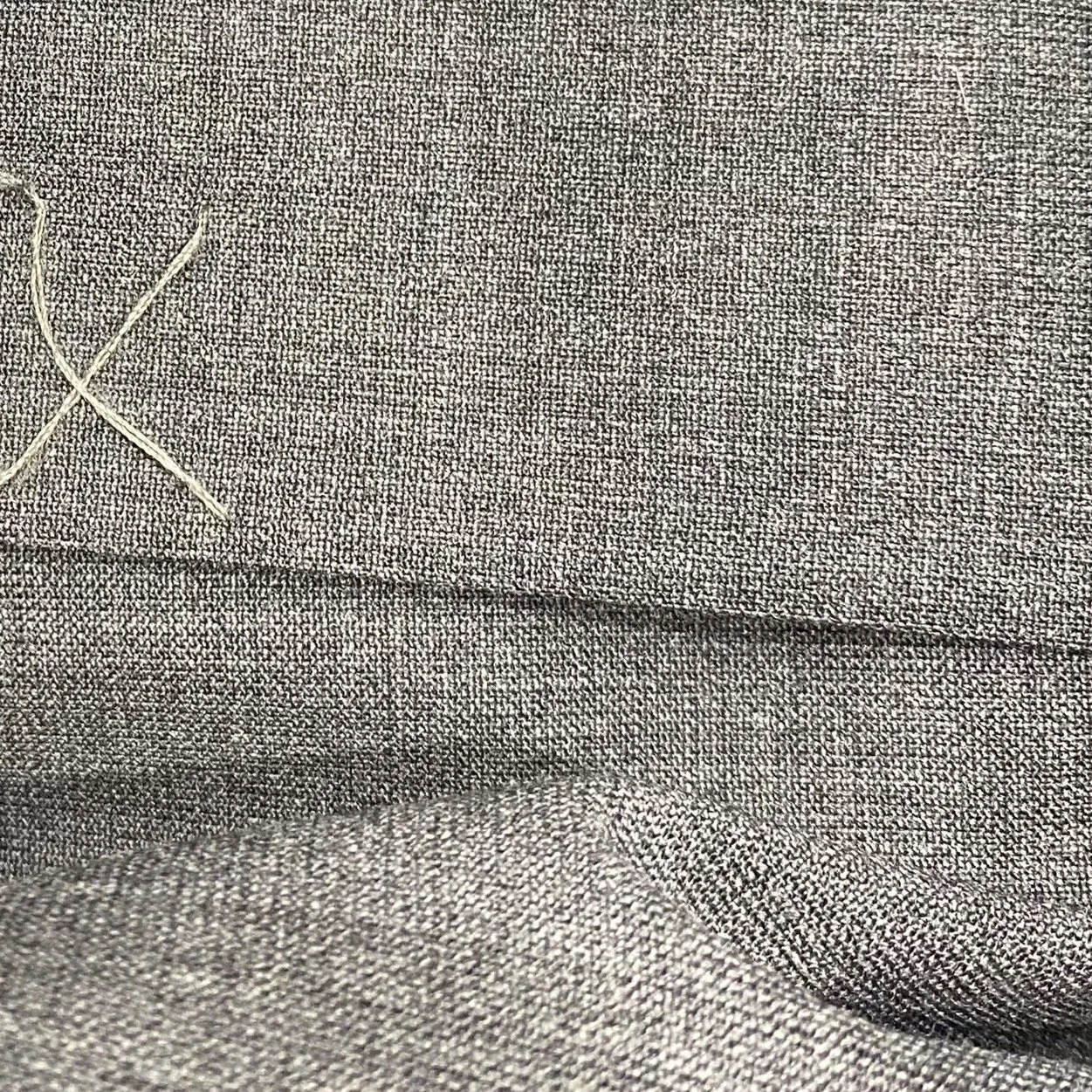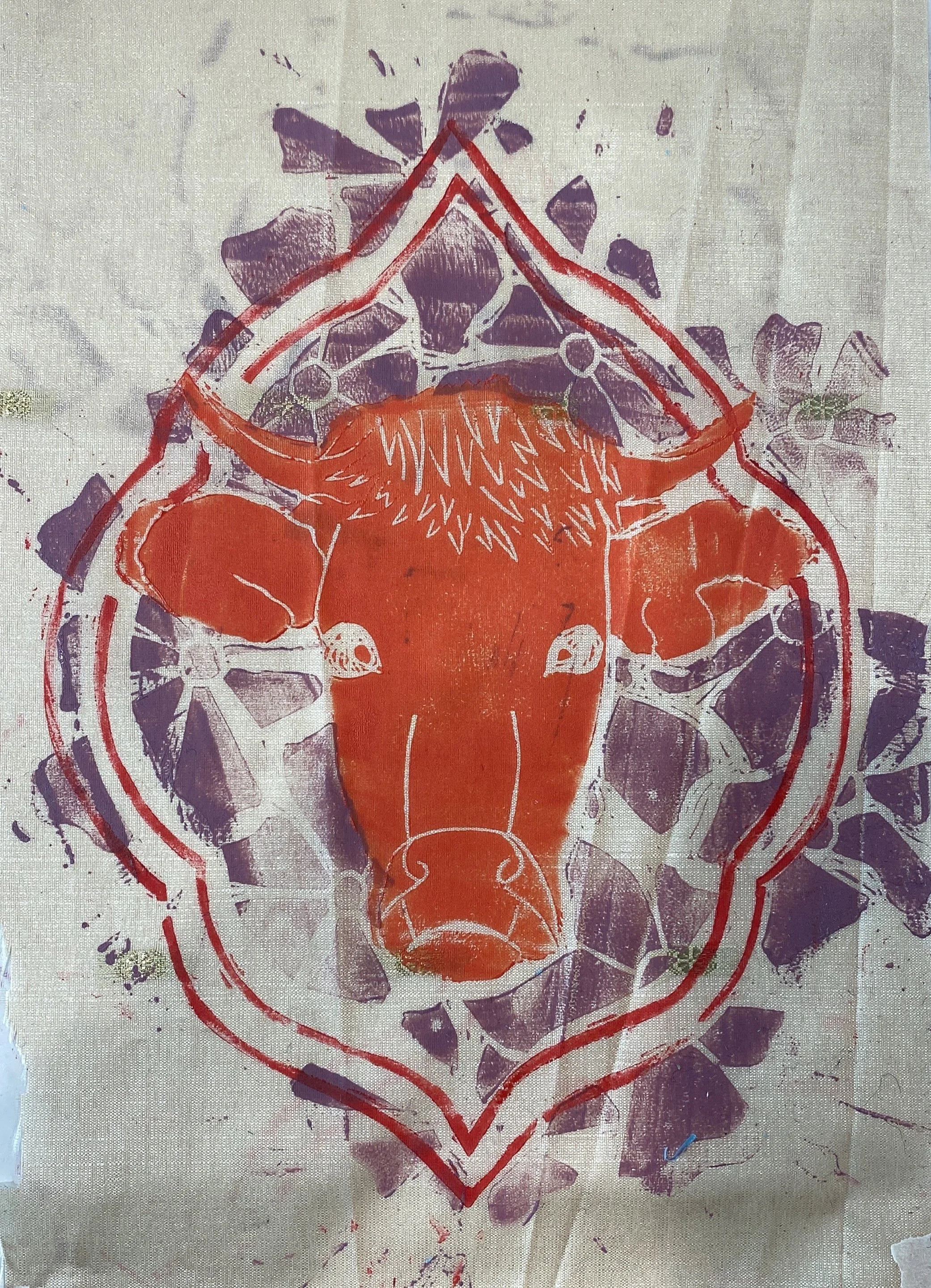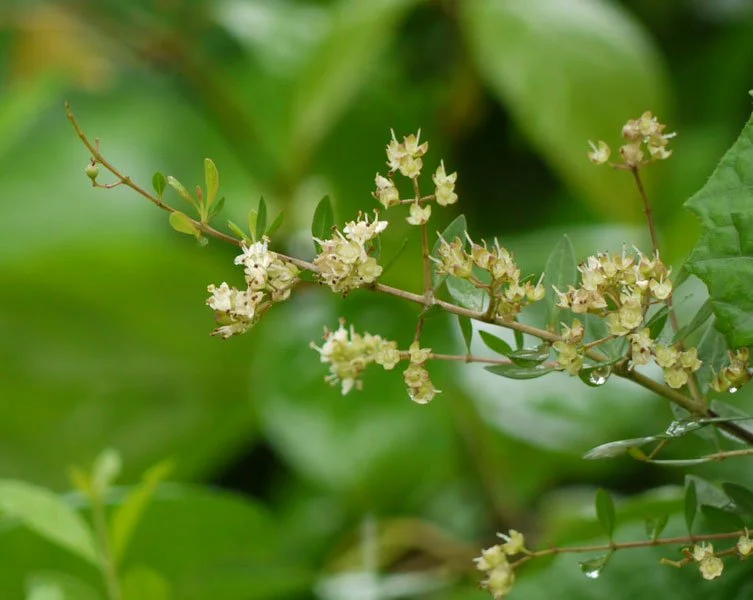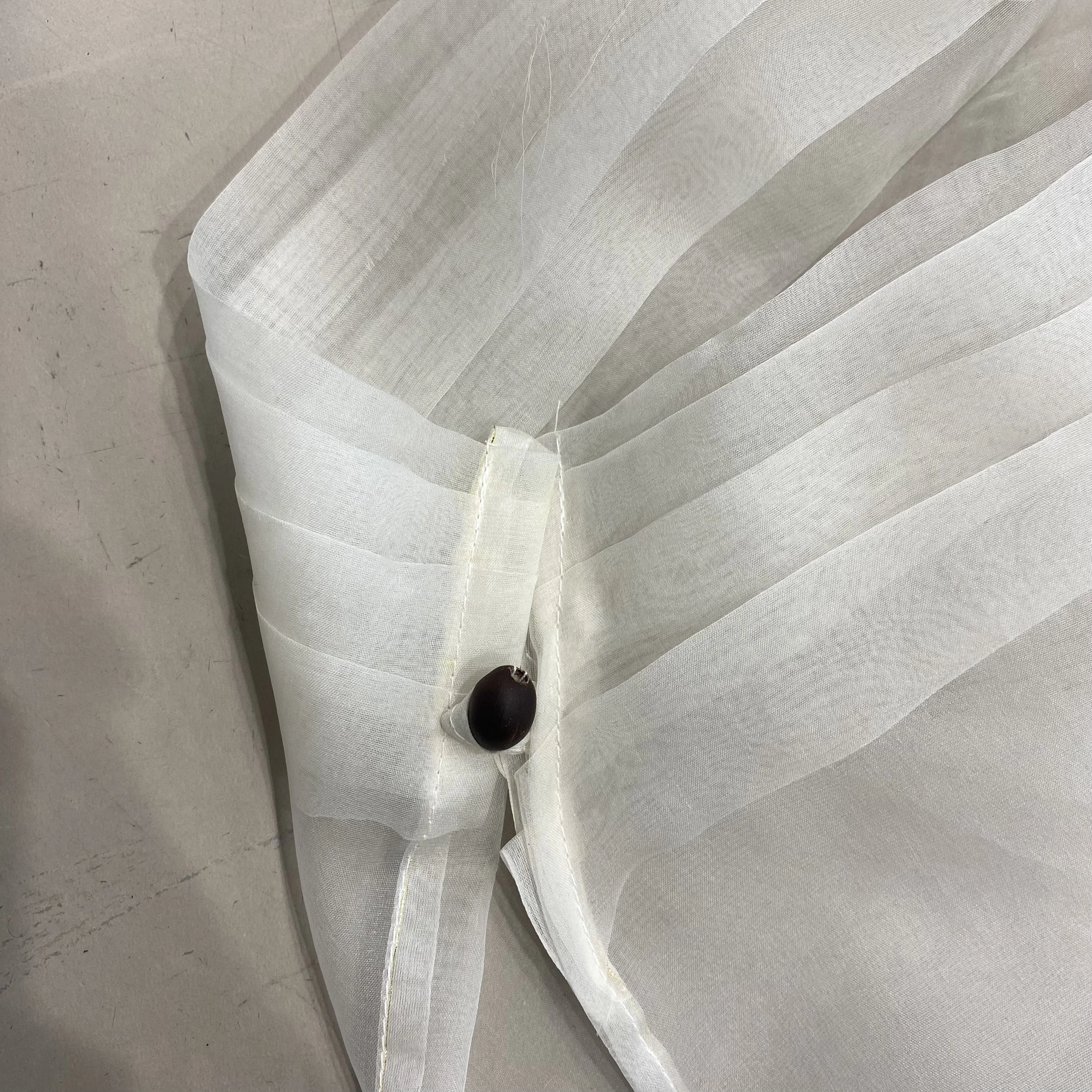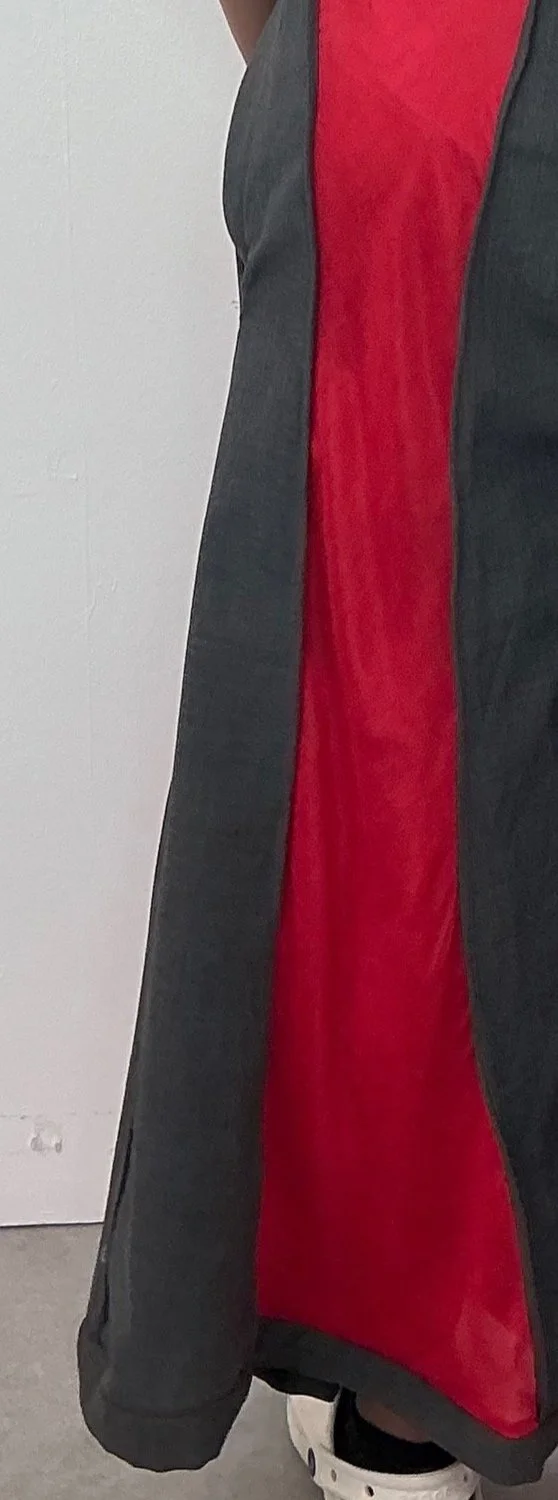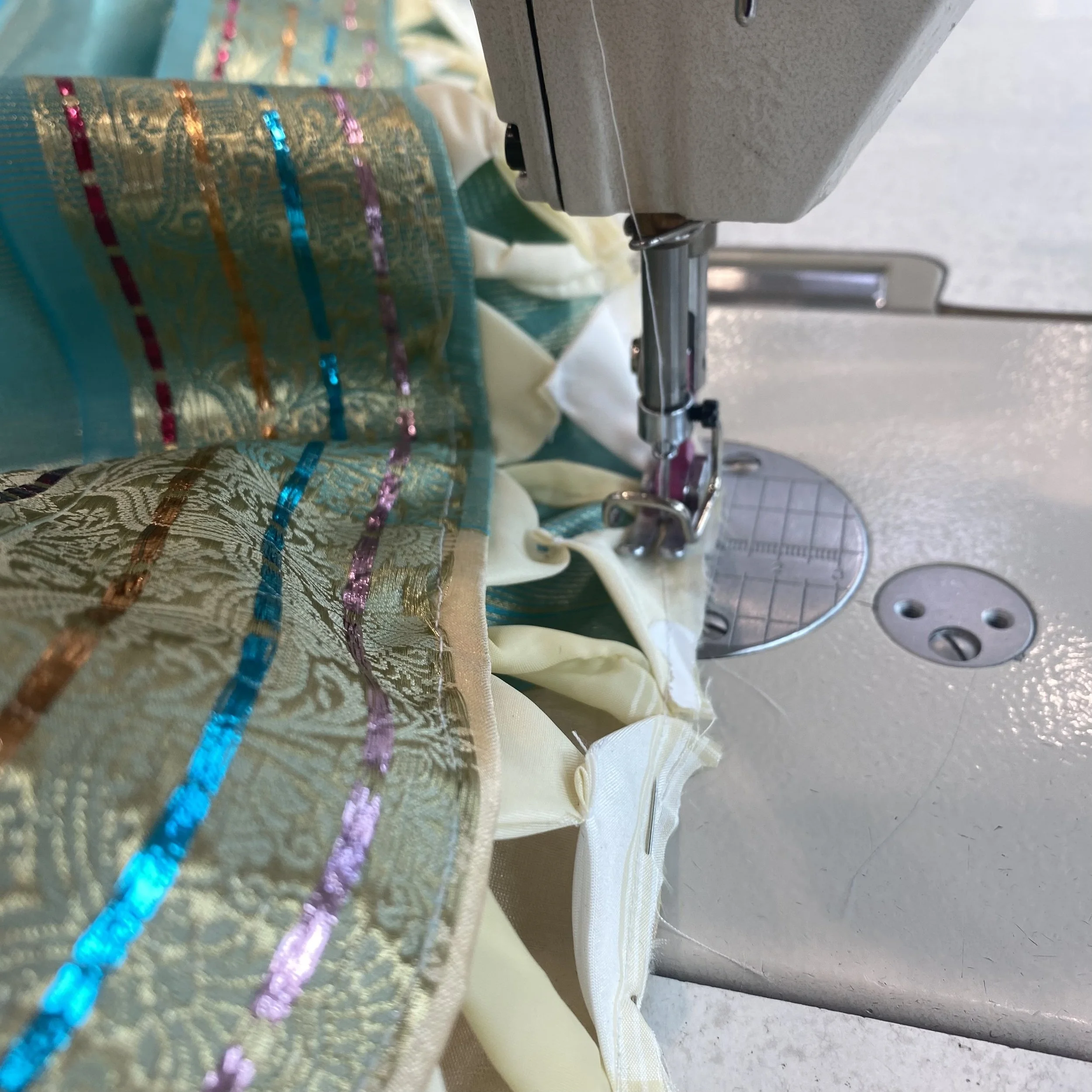Colours of India…
Just like my Aji’s wardrobe I wanted this collection to be colourful to celebrate that traditional Indian wear has all the vibrant colours and it’s not often to be seen in black.
Materials
Silk sari given to me by my Aji
My mum’s night dress from the late 80s
100% silk silk organza
Wool and polyester blend tweed jackets, sourced from charity shops
Secondhand complete men’s suit made from wool
Secondhand polyester churidar pants
Textile Print
Collaborated with textile design students Aimee Rogers and Elowen Wallis
The cow is inspired my grandad, Aja who grew up raising Hereford cattle in Guyana.
Henna Dye
Henna comes from the leaves of the herbaceous henna plant. In Ancient Egypt and India it is used to create tempory artworks on the skin but can also be used on nails and hair due to the proteins. It can also work on protein fibers such as wool and silk.
Henna dye-
Dilute powdered henna with a small quantity of warm water
Add the henna to the dye bath, stir and heat for 1-2 hours
Damp and mordant fabric and add directly to dyebath and cook for another hour on medium heat.
Mordants-
Mordants help to darken the olive green ph of henna to create a browner tone such as iron and alum can make the dye more long lasting.
Patchwork
Patchworking pattern pieces and seeing how well the patches gather at the waist.
Double the length of squares for a fold up hem.
Beading and crochet flowers
Instead of cutting up my mum’s nightdress and creating something completely different. I wanted to incorporate the memories from childhood, when she would teach me how to crochet flowers. In terms of relating it to my heritage, flowers are seen everywhere in wedding decorations, prayers (puja), garlands and seen in the textiles of our clothes.
Divine lotus bead connecting the cape together and using recycled glass beads to secure the pleats on the other side.
Pin tucks
Pin tuck seams with a red top stitch to match the red panels on the trousers
Cut out trims
6x6 squares folded twice to make triangles with the raw edge sewn into a binding or the main fabric



